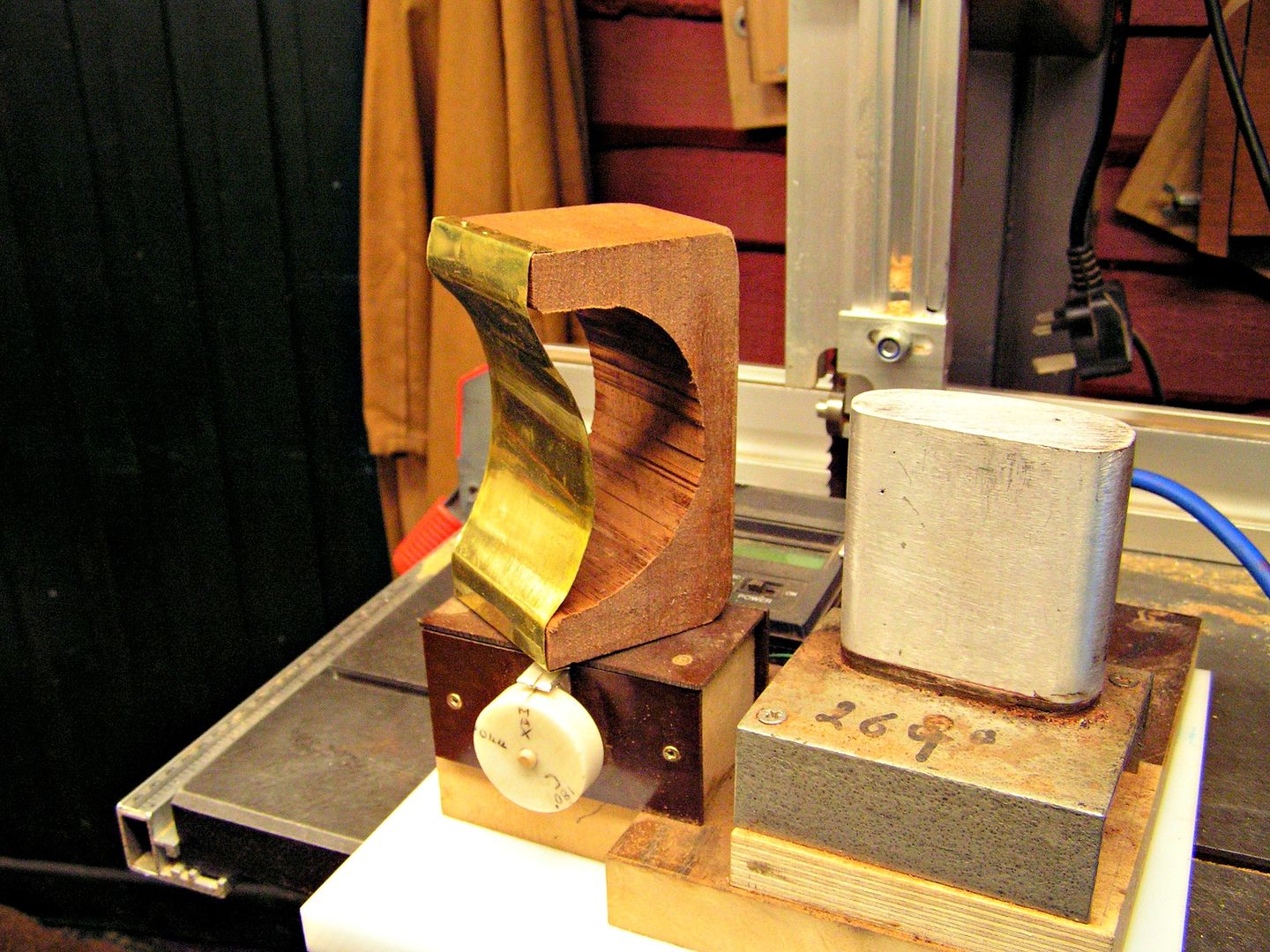Mike
I am one of the few professional builders who still hand bends - I use a machine to 'set' the bends and it is this reverse method that maintains the shape; there is no spring-back!
With mahogany you need three conditions:
- Hot iron
- Thin sides
- Dry bend
Like all woods there is a fine line between scorching and just right. Some mahoganies, particularly the African varieties bend well. Very light-weight mahoganies can crease and the fibres crush and no amount of soaking and steaming will get rid of the ugly lines across the grain that result form this. 2.2mm is a good side thickness for larger instruments like guitars and baritone ukes ( although some of Martin production guitars are less than this). May I suggest you get down to at least 1.8mm for instruments smaller than this so you have a good chance of getting the bend. Only use water to stop scorching. Steam is created just above 240 degrees F. Your iron should be 300 degrees plus... It seems to me that water if it is used it only softens the fibres because any steam produced does not 'help' bending. You also get reactions to the minerals in the water and if using an iron pipe this is a recipe for some frustrating after sanding of iron stain. Water is also a killer if your wood is figured and you are hand bending (answering the post question...)
As you are in the UK and it looks like you will be making more instruments invest in a Camarillo iron, Brady hybrid pattern. These are British made to order irons that are light years ahead of the Ibex model (I am on my second Ibex having burnt out the first) and cost less. You will have to wait about 5 weeks for one...
My next instruction video will be on hand bending but I need to make some surplus before I can fund another week in the studio


